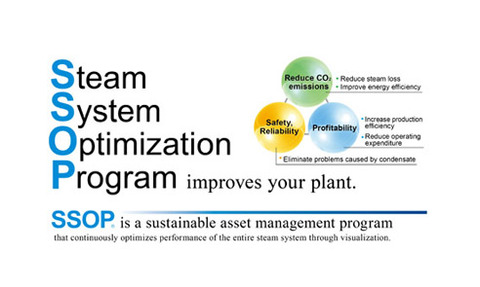
TLV Euro Engineering has introduced the Steam System Optimization Program (SSOP) in order to help customers further improve safety, reliability and profitability
The sustainable asset management program is designed to optimise an entire steam system through visualisation. The aim is also to contribute to building a low-carbon society by minimising condensate problems, reducing steam losses and thereby reducing CO² emissions.
Originally intended for petrochemical plants and oil refineries, SSOP has now been developed for other industries that have unique steam equipment and steam production equipment.
SSOP works in three phases:
Phase 1 involves ‘best practice’ of steam trap management and the optimisation of all condensate discharge locations. This features the application of the BPSTM condensate discharge location management program to achieve and maintain the lowest possible failure rate in traps, valves and piping.
Phase 2 involves ‘best practice’ of steam system management to optimise all steam applications, such as steam-using equipment and tracing. On site surveys can be performed to identify any gap between theoretical expectations of steam utilisation and actual plant operation.
Phase 3 is the important balancing and optimisation of the entire steam system. This considers all interconnected parts of the total system as an individual asset and allows the visualisation of the whole to identify the most effective combination of improvement opportunities.
Increased reliability and productivity is then achieved for the client through important practical improvements such as the prevention of production bottlenecks, unexpected equipment failures and the elimination of water hammering, says the company.
Initial SSOP assessment can estimate benefits for an entire plant based on quantified benefits in assessed areas – leading to the development of a road map to the optimisation of the plant.
For more information, click here.






